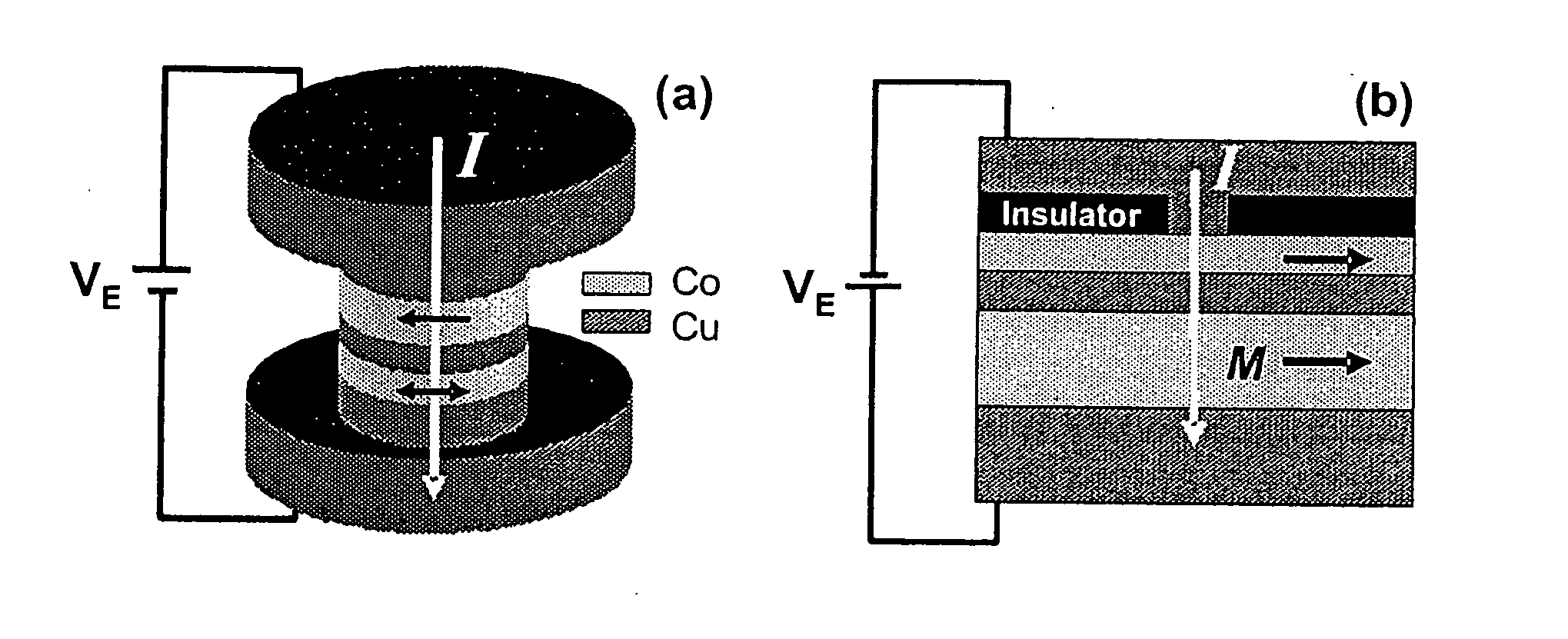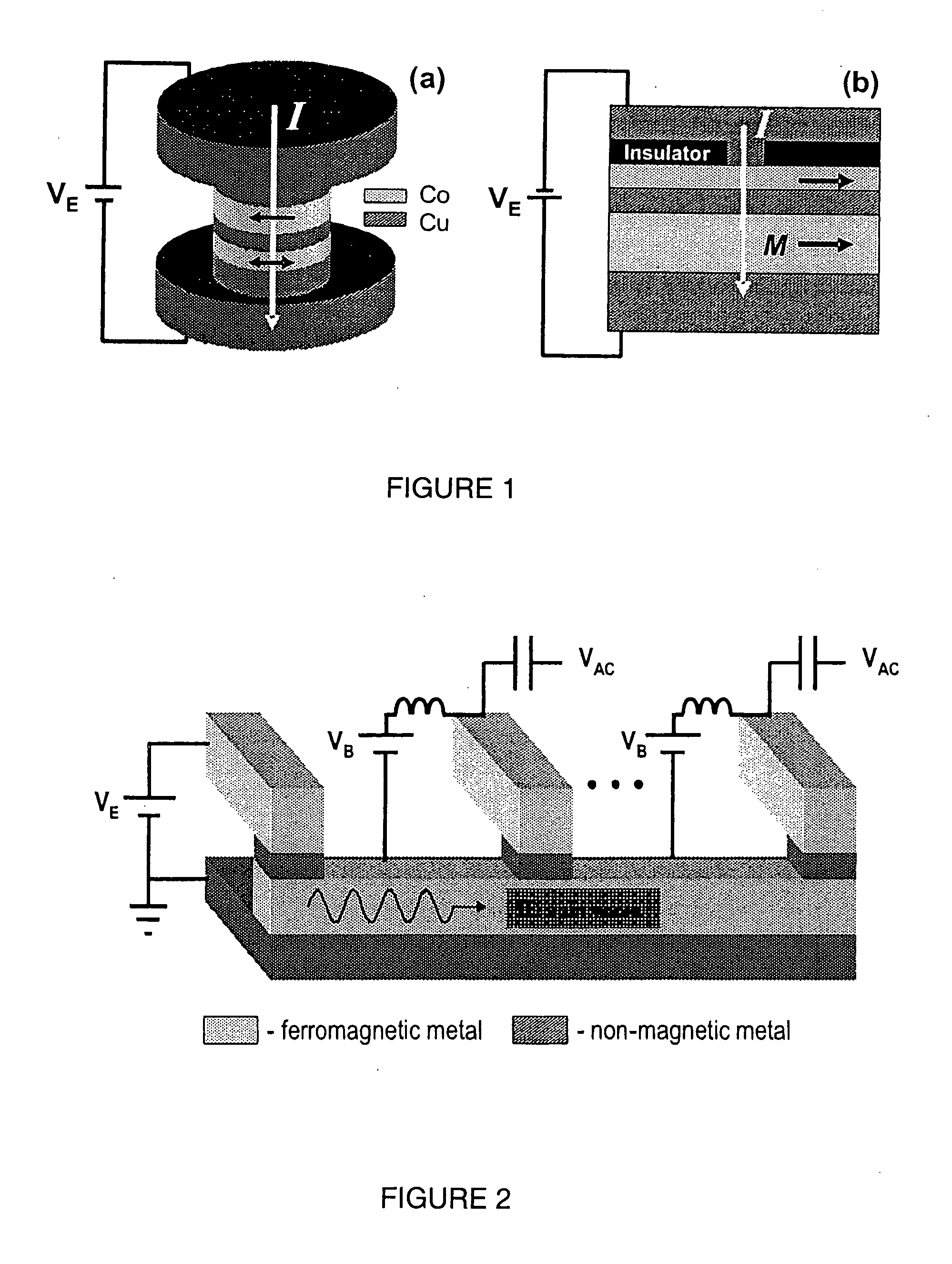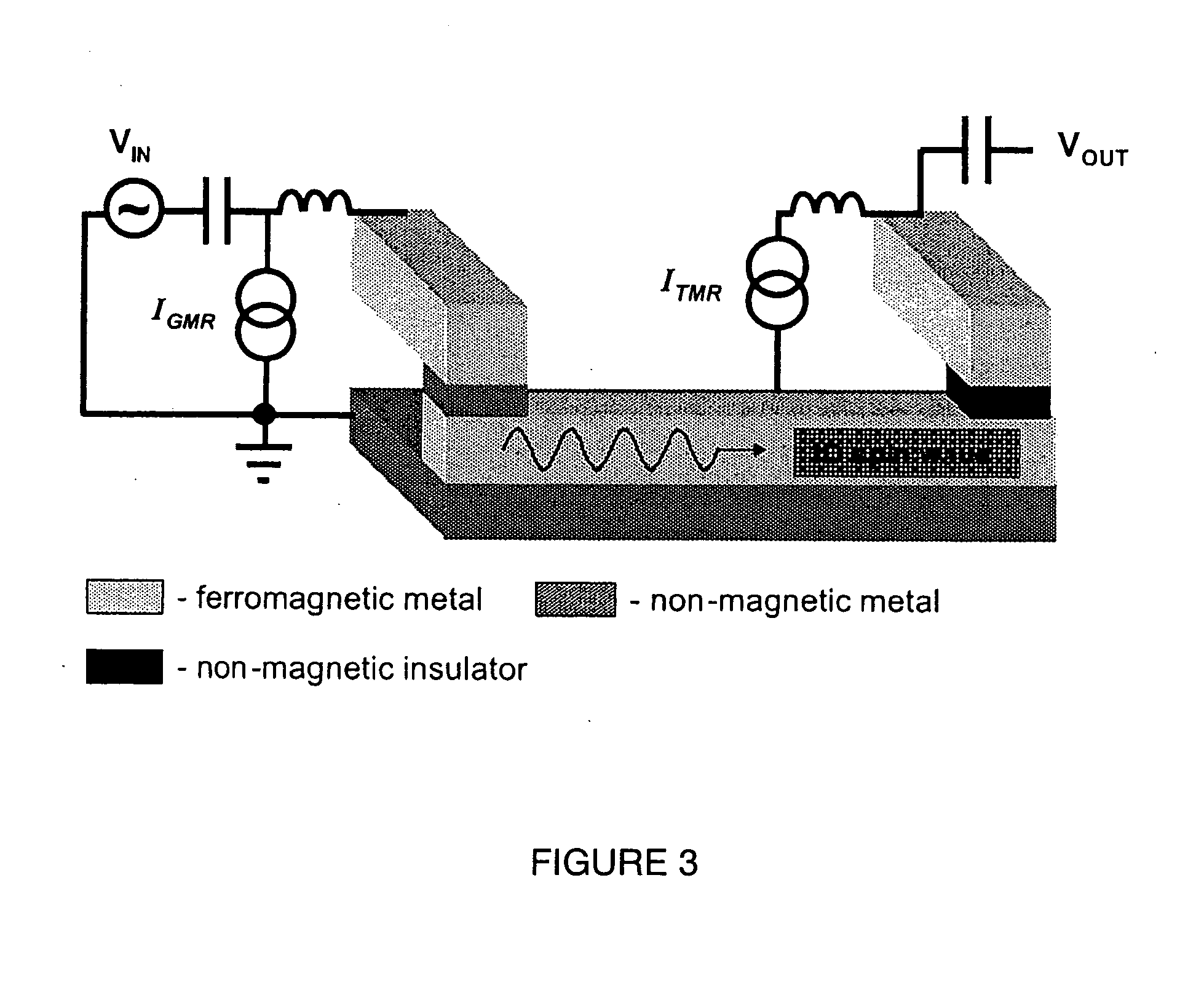Spin-torque devices
a technology of spin-torque devices and spin-torque, which is applied in the direction of magnetic bodies, instruments, transportation and packaging, etc., can solve the problems of exceptionally hard radiation and devices that do not use semiconductor materials, and achieve the effect of multi-output power
- Summary
- Abstract
- Description
- Claims
- Application Information
AI Technical Summary
Benefits of technology
Problems solved by technology
Method used
Image
Examples
Embodiment Construction
[0017] This invention broadly resides in nano-scale, spin-torque devices that utilize current-driven spin waves for microwave signal processing. As an introduction, the device of FIG. 2 comprises a metallic ferromagnetic nanowire with nominal dimensions of ˜5 nm thick, ˜50 nm wide, and ˜5 mm long. A number of ferromagnetic leads are attached via non-magnetic metallic spacers (GMR leads). These leads make contact to the wire in several places along its length forming a series of magnetic nanocontacts that serve as spin-polarized current injectors. When a large enough voltage is applied to a particular lead, spin current injected into the wire excites magnetization oscillations under the injector. These excitations of magnetization propagate along the wire as spin waves and induce microwave voltage signals at the neighboring DC-biased nanocontacts. Thus, the nanowire acts as a one-dimensional (1D) waveguide for the current-driven spin waves that provide coupling among the nanocontacts...
PUM
| Property | Measurement | Unit |
|---|---|---|
| length | aaaaa | aaaaa |
| diameter | aaaaa | aaaaa |
| microwave power | aaaaa | aaaaa |
Abstract
Description
Claims
Application Information
 Login to View More
Login to View More - R&D
- Intellectual Property
- Life Sciences
- Materials
- Tech Scout
- Unparalleled Data Quality
- Higher Quality Content
- 60% Fewer Hallucinations
Browse by: Latest US Patents, China's latest patents, Technical Efficacy Thesaurus, Application Domain, Technology Topic, Popular Technical Reports.
© 2025 PatSnap. All rights reserved.Legal|Privacy policy|Modern Slavery Act Transparency Statement|Sitemap|About US| Contact US: help@patsnap.com



